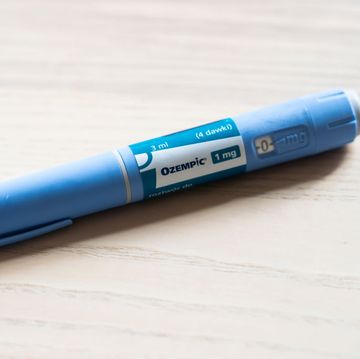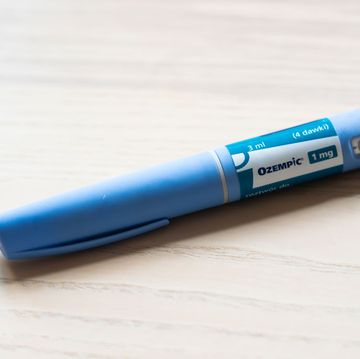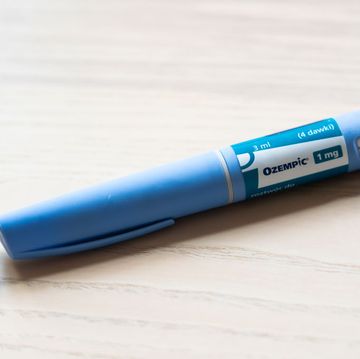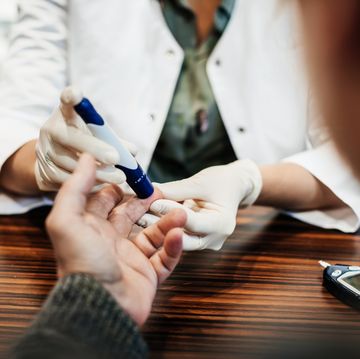Chances are, you think you'd be able to spot the signs you were at serious risk of getting sick. Thing is, you really might not. More than 86 million people in the United States—that's 1 out of every 3 adults—are prediabetic, yet 90 percent of them have no idea. That's a problem, because if you don't know you have it you likely aren't making the changes needed to ward off the full-blown disease.
What is prediabetes?
“Prediabetes is when your blood sugar is above normal but not in the range that would be considered diabetes,” says Elizabeth Halprin, MD, an endocrinologist at Joslin Diabetes Center in Boston. A normal blood sugar reading is less than 110 mg/dl; greater than 126 is diabetes. If your fasting blood sugar lands somewhere between those numbers, you’ve qualified for prediabetes.
The easiest way to determine if you have it is to get a simple blood test. The most accurate one is the A1C test, which determines the percentage of glucose (sugar) that's attached to the oxygen-carrying protein hemoglobin in your blood.
"It's a good indicator of what your blood sugar has been like for the past two or three months," says Loren Wissner Greene, MD, a clinical professor and endocrinologist at NYU Langone Medical Center. A score of 5.9 and below is considered normal. Anything between 5.7 and 6.4 is considered prediabetes, and 6.4 and above is full-blown diabetes.
The American Diabetes Association recommends that everyone age 45 and older get their blood sugar checked, though you might need to be tested earlier if you're overweight, have polycystic ovary syndrome (PCOS), or have a family history of diabetes. People who are African-American, Native American, Asian-American, Latino, or Pacific Islander may also be at higher risk and need testing earlier, so check with your doctor.
(Fight diabetes and lower your cholesterol with the affordable, effective health hacks in The Doctors Book of Natural Healing Remedies!)
Signs of prediabetes
As you might have guessed from the name, unchecked prediabetes often turns into full-blown diabetes. But it can be hard to tell if you have this borderline condition, because it doesn't usually cause any symptoms. “There is no way to know you have prediabetes without a doctor diagnosing it with a blood test,” says Christine Lee, MD, program director within the NIH’s National Institute of Diabetes and Digestive and Kidney Diseases (NIDDK).
However, there are certain patterns and changes that can serve to tip you off. Watch out for these sneaky signs, which could signal that you're headed for prediabetes—or that you already have it.
You’re packing extra pounds
Carrying around excess fat, especially in your middle, raises the chance you’ll become resistant to insulin, which is a major risk factor for developing diabetes. “Being overweight puts stress on your pancreas to produce enough insulin and it makes it harder for the insulin you produce to do its job,” says Halprin. When your belly is the main site of your weight gain, it means you have fat around your organs, which can also nudge you closer to the diabetes danger zone.
One smart way to trim belly fat: Eat more vegetables. “You can use the ‘plate’ method, where half your plate is filled with vegetables, a fourth is protein, and a fourth is a whole-grain starch,” says Halprin.
Your skin’s acting strange
Prediabetes is usually symptom-less, but in some people it may show itself through milder versions of symptoms that are associated with diabetes, like feeling thirsty or needing to pee more often. Another red flag is skin changes, like discoloration or skin tags.
“Some people with prediabetes may have signs of insulin resistance like darkened skin in the armpit or on the back and sides of the neck, or many small skin growths in these same areas,” says Lee. Keep a close watch on any skin symptoms and bring your concerns to your doctor. (Here are 6 other small skin issues that can signal a much bigger problem.)
You indulge your sweet tooth
Sweet treats may taste good, but overdoing them puts you at risk for prediabetes. While limiting candy is a start, refined carbohydrates such as bread, rice, pasta, and potatoes can mess with your weight and sugar levels, too, says Halprin. Limit simple carbs and sweets and make complex carbs (like whole grains), proteins, and veggies your staples.
This is your body on sugar:
You’re rarely in motion
Regular physical activity helps your body use insulin more efficiently, says Halprin. It can also help you maintain a healthy weight, which, in turn, decreases your risk of prediabetes and diabetes. If you’re used to a sedentary lifestyle, start small with a 10-minute walk three times a day. Once you’ve found your groove (and after checking in with your doctor), kick things up a notch until you’re a regular mover and shaker. Ideally, you should aim to log at least 150 minutes of moderate activity per week.
You’ve blown out lots of birthday candles
You can't stop time, but getting older puts you at risk for lots of things, including prediabetes. That's why the American Diabetes Association recommends doctors test all adults over 45 for prediabetes. See your doctor regularly to ensure that you’ve got a good handle on your blood sugar.
You've had blood sugar problems in the past
Women who are diagnosed with gestational diabetes during pregnancy don't exactly go back to "normal" after their babies are born. Even if your blood sugar level is OK at your postpartum checkup, you still have an increased risk of prediabetes and diabetes later in life. Ditto if you had a baby who weighed over nine pounds at birth.
Your family history and ethnicity matter, too. If diabetes is in your family tree—especially if you’re African American, Alaskan Native, American Indian, Asian American, Hispanic/Latino, or Pacific Islander American—you’re more likely to end up with prediabetes.
You toss and turn at night
When you don’t get good shut-eye, your body can get out of whack fast. Bad sleep can make you gain weight, which raises your prediabetes risk. Sleep disorders, like obstructive sleep apnea, can wreak havoc on blood sugar, too, says Lee.
Talk to your doctor if you’re struggling with snoozing. Treating your sleep problems might help keep you out of the diabetes danger zone.













